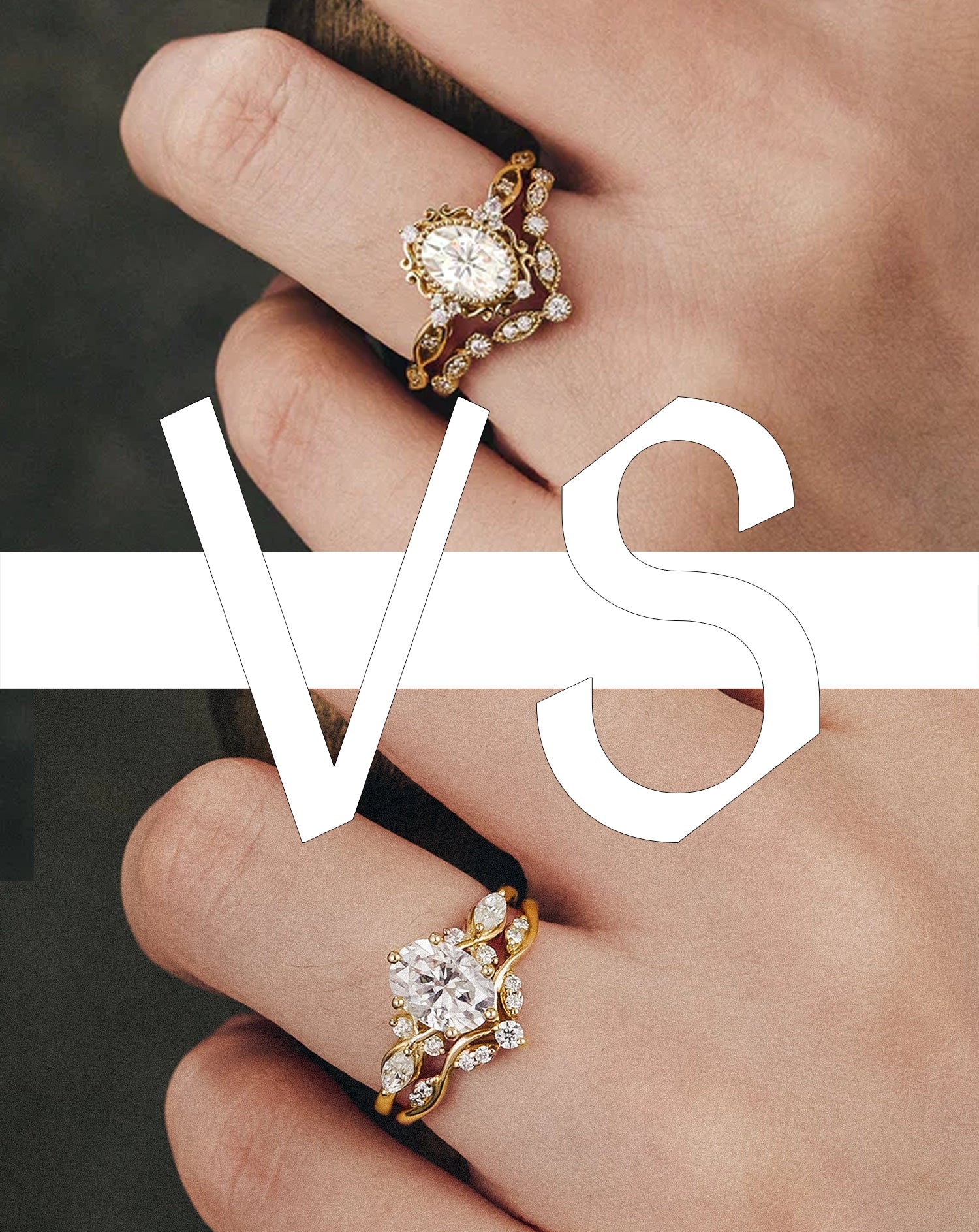
Engagement rings have long been symbols of love, commitment, and eternal promises. Over the years, the designs have evolved, blending tradition with innovation. From the iconic solitaires of the past to the intricate and bold designs seen today, the evolution of engagement rings reflects not just changing tastes but also the broader shifts in culture, society, and technology. This journey from classic designs to modern twists has made the engagement ring not just a piece of jewelry, but an intimate reflection of personal style and emotional significance.
The Classic Engagement Ring: Timeless and Elegant
The engagement ring, in its most classical form, has been centered around one key element: the diamond. This precious stone, long associated with rarity and enduring beauty, has been the cornerstone of engagement rings for centuries. The tradition of diamond engagement rings was popularized in the late 19th century, following the discovery of diamond mines in South Africa and the resulting marketing campaigns by the De Beers company. The slogan “A diamond is forever” became ingrained in popular culture, forever cementing diamonds as the ultimate symbol of lasting love.
The Solitaire Ring
The solitaire engagement ring, characterized by a single diamond set in a simple band, is the epitome of timeless elegance. Its clean design emphasizes the beauty of the central stone, allowing the diamond to take center stage. The popularity of the solitaire ring has endured for generations, largely due to its classic appeal and ability to suit any style. Over time, the solitaire design has been refined with different cuts, such as round, princess, and emerald, each bringing a unique character to the ring.
The Three-Stone Ring
Another classic design is the three-stone engagement ring, which symbolizes the past, present, and future of a relationship. The three stones, often diamonds, represent the journey a couple has shared and the bright future ahead. This design is favored by those who appreciate both symbolism and the elegance of a multi-stone setting. The three-stone ring has remained popular through the years, thanks to its rich meaning and beautiful aesthetic.
The Halo Setting
The halo engagement ring, which features a central stone surrounded by a ring of smaller diamonds or gemstones, first gained prominence in the early 20th century. The halo setting enhances the appearance of the center stone, making it appear larger and more brilliant. This design has become a classic, offering a stunning contrast between the large central stone and the surrounding accents. The halo ring combines timeless elegance with a touch of luxury, making it a favorite for those who love the sparkle of diamonds.
The Rise of Modern Engagement Rings: Personalization and Innovation
While the classic designs have stood the test of time, engagement rings have undergone a significant transformation in recent decades. Modern couples are no longer bound by tradition; instead, they are embracing more personalized and innovative styles that reflect their unique tastes and values. From alternative gemstones to customizable settings, the modern engagement ring is a departure from the standard and a reflection of the individuality of the wearer.
Alternative Gemstones
One of the most noticeable trends in modern engagement rings is the rise of alternative gemstones. While diamonds remain a popular choice, many couples are now opting for sapphires, emeralds, rubies, and even more unconventional stones like morganite or aquamarine. These gemstones not only offer a broader spectrum of color and personality, but they also carry unique meanings. For example, sapphires are traditionally associated with wisdom and loyalty, while emeralds represent rebirth and renewal. The inclusion of these stones in engagement rings offers a way to personalize the ring, moving away from the traditional diamond-centric designs.
Custom and Vintage-Inspired Rings
Modern engagement rings are also characterized by a greater degree of customization. Couples are seeking rings that reflect their personal stories and preferences, leading to the rise of bespoke and custom designs. Jewelry designers now offer a wide range of options, allowing customers to choose everything from the metal to the setting, and even the gemstones. This has led to a surge in popularity for vintage-inspired engagement rings, which take influence from bygone eras like the Victorian, Edwardian, and Art Deco periods. These rings feature intricate designs, often with filigree work or milgrain detailing, and are sought after for their historical charm and romantic appeal.
The Rise of Ethical and Sustainable Rings
In recent years, the jewelry industry has seen a shift toward more ethical and sustainable practices. As awareness grows about the environmental and human rights issues surrounding traditional diamond mining, many couples are opting for engagement rings that are conflict-free and sustainably sourced. Lab-grown diamonds, which are chemically identical to mined diamonds, have become increasingly popular as an ethical alternative. In addition to diamonds, other materials such as recycled gold and ethically sourced gemstones are being used in the creation of engagement rings, ensuring that the symbol of love is also one of responsibility.
Mixing Classic with Modern: Contemporary Twists on Traditional Designs
While modern engagement rings embrace innovation, many couples still seek the timeless elegance of classic designs. The good news is that it’s possible to blend traditional aesthetics with contemporary elements, resulting in a hybrid design that feels both classic and modern.
The Cushion Cut Revival
The cushion cut diamond, once favored in vintage engagement rings, has made a major comeback in recent years. This design, with its rounded corners and larger facets, combines the charm of old-world elegance with the brilliance of modern cutting techniques. Often seen in halo settings or with side stones, the cushion cut is a beautiful example of how vintage and modern styles can be combined seamlessly.
Mixed Metals
Another modern twist on a classic design is the use of mixed metals. While yellow gold, white gold, and platinum have traditionally been the go-to metals for engagement rings, contemporary designs now often incorporate combinations of these metals for a more dynamic and personalized look. For instance, a platinum band with rose gold accents adds a touch of warmth to the traditional silver-toned metals, creating a striking contrast that elevates the overall design.
Unique Settings
While the classic solitaire setting remains popular, many modern engagement rings feature more innovative and unexpected settings. From tension settings that hold the stone in place using the pressure of the band, to bezel settings that fully encase the stone for a sleek and secure look, these designs add a modern flair to traditional settings. The inclusion of side stones, intricate bands, or unexpected shapes in the center stone further enhances the uniqueness of these rings.
The Future of Engagement Rings: What’s Next?
The evolution of engagement rings is far from over. As technology continues to advance, new possibilities for ring design emerge. For example, 3D printing technology is making it easier to create custom engagement rings with intricate details that would have been difficult or impossible to achieve through traditional methods. As sustainability becomes a growing concern for consumers, lab-grown diamonds and recycled materials will likely continue to play a significant role in shaping the future of engagement ring trends.
At the same time, the desire for personalization will only increase. Couples will continue to seek out rings that reflect their unique love stories, whether that means incorporating birthstones, engraving personal messages, or selecting stones with special significance. The boundaries of what constitutes a traditional engagement ring are expanding, and the future promises even more creativity, innovation, and meaning.
Conclusion
The evolution of engagement rings reflects the changing nature of love and commitment, as well as the dynamic tastes and values of modern couples. From the classic elegance of solitaire rings to the bold, personalized designs of today, engagement rings continue to evolve, offering a wide range of options for those looking to celebrate their love in a way that feels true to their unique story. Whether opting for timeless designs or embracing modern twists, the engagement ring remains a symbol of love, connection, and commitment—a token that will last for generations to come.
